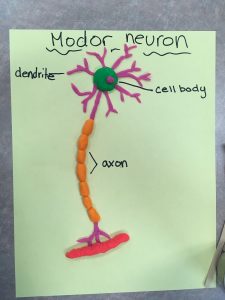Neuron and Synapse Function
Neuron Structure and Function
Neurones are cells that transfer information. They are composed of a cell body, dendrites, and a axon. The dendrites conduct the message towards the cell body and the axon conducts the muscle away from the cell body. Action potential is a brief electric charge that travels down an axon. This is caused by the movement of positive ions in and out of the axon. There’s hold is the amount of stimulation needed to trigger a neural impulse. Resting potential is when there are more positive ions outside then inside. In resting potential there are negative ions in the axon this is called “net”. Depolarization is when the incoming message stimulates a section of the axon. Chanel’s in the membrane open to allow Na+ ions to enter the axon during depolarization. Repolarization is when Chanel’s open to allow k+ ions to exit the axons. The charge then returns to normal but causes the next axon to depolarize. Action potential sweeps along the axon membrane at a constant velocity.
A synapse structure includes tips of the terminal branches on the axon, the space between neurons and the ends of the dendrites on the receiving neuron. The axon terminal button produces the neurotransmitters. It stores the neurotransmitters in the synaptic vesicles which then recycles the neurotransmitters building blocks. When the action potential reaches the axon terminal it causes the synaptic vesicles to release neurotransmitters into the gap. The neurotransmitters then diffuse through the gap and bind to the receptors on the receiving neuron. The neurotransmitters then are recieved as inhibitory, which represses action potential on the receiving neuron or excitatory, which stimulates action potential on the receiving neuron.



Leave a Reply